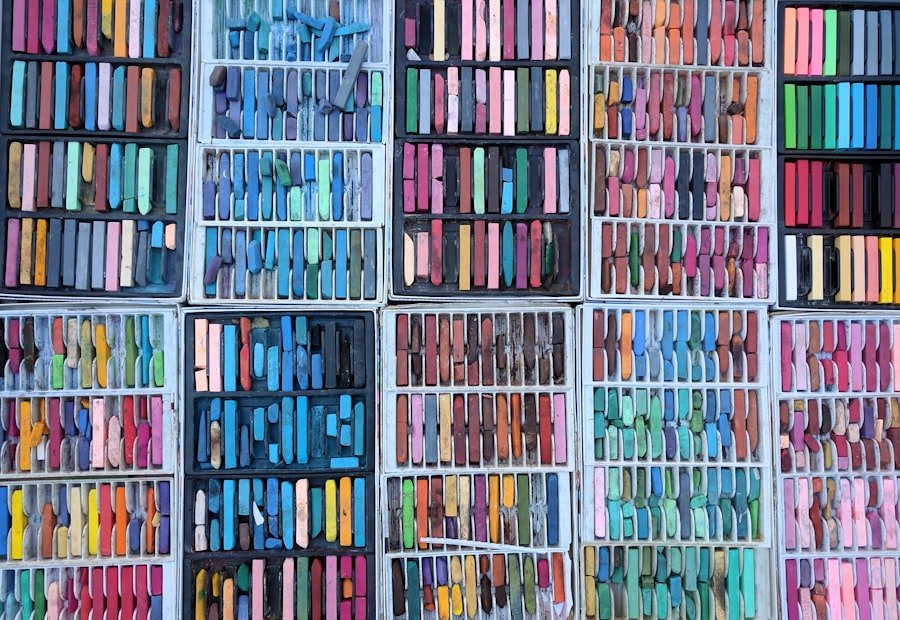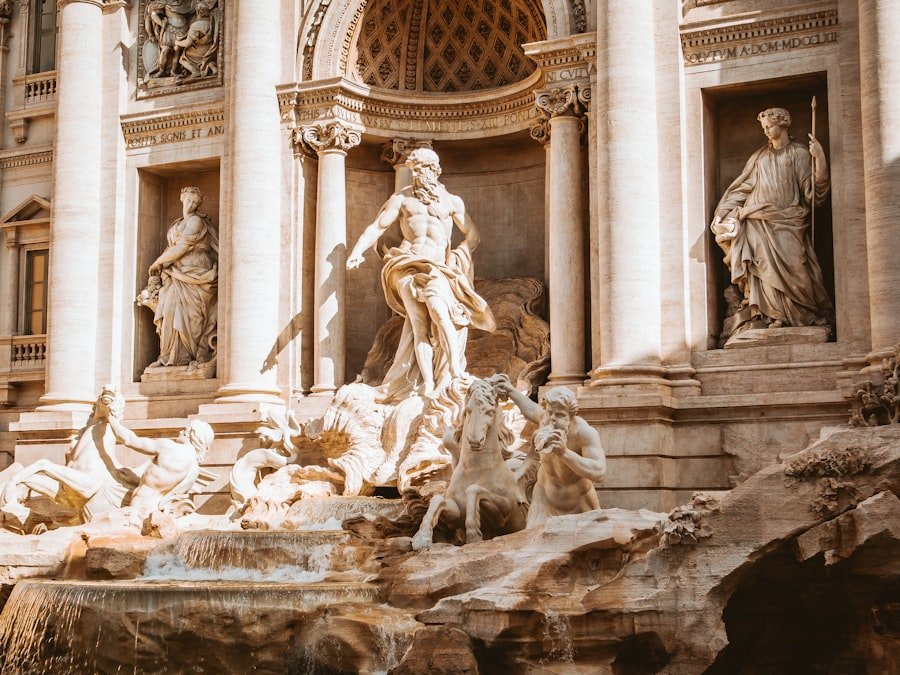Artificial Intelligence (AI) has emerged as a transformative force across various sectors, and its intersection with creativity is particularly fascinating. Traditionally, creativity has been viewed as a uniquely human trait, characterised by the ability to generate novel ideas, express emotions, and produce works that resonate on a personal or cultural level. However, the advent of AI technologies has prompted a reevaluation of this notion.
AI systems, equipped with advanced algorithms and vast datasets, are now capable of generating music, visual art, literature, and even complex designs that challenge our understanding of what it means to be creative. The integration of AI into creative processes raises profound questions about the nature of creativity itself. Can machines truly create, or are they merely mimicking human creativity through learned patterns?
As AI continues to evolve, it blurs the lines between human and machine-generated content, leading to a rich tapestry of collaboration and competition. This exploration of AI’s role in creativity not only highlights the capabilities of these technologies but also invites a deeper examination of the philosophical implications surrounding originality, authorship, and the essence of artistic expression.
Summary
- AI is revolutionising the creative industries by offering new tools and possibilities for artistic expression.
- AI challenges the traditional concept of originality by blurring the lines between human and machine creativity.
- The ethical and legal implications of AI in creativity raise concerns about copyright, ownership, and the potential for misuse.
- The future of artistic expression is being shaped by AI, with both opportunities and challenges for artists and creators.
- AI is impacting traditional creative processes, raising questions about the role of human creativity in a world dominated by technology.
The Role of AI in Creative Industries
AI’s influence on creative industries is becoming increasingly pronounced, with applications spanning music composition, visual arts, literature, and even fashion design. In the realm of music, for instance, AI algorithms can analyse vast libraries of existing compositions to generate new pieces that adhere to specific styles or genres. Platforms like OpenAI’s MuseNet and Google’s Magenta have demonstrated the ability to compose original music that can evoke emotional responses similar to those elicited by human composers.
This capability not only enhances the creative process but also provides musicians with innovative tools to explore new sonic landscapes. In visual arts, AI has made significant strides through generative adversarial networks (GANs), which can create stunning images that often rival those produced by human artists. Projects like DeepArt and Artbreeder allow users to blend styles and concepts, resulting in unique artworks that challenge traditional notions of authorship.
Furthermore, AI-driven tools are being employed in advertising and marketing to generate compelling visuals and copy that resonate with target audiences. As these technologies continue to develop, they are reshaping the landscape of creative industries, offering new avenues for expression while simultaneously raising questions about the role of human artists in an increasingly automated world.
AI and the Concept of Originality

The concept of originality is central to discussions about creativity and art. Traditionally, originality has been associated with the ability to produce something entirely new and unprecedented. However, when it comes to AI-generated content, the definition of originality becomes murky.
AI systems learn from existing data, drawing upon a vast array of influences to create new works. This raises the question: can something generated by an algorithm truly be considered original if it is derived from pre-existing material? One perspective posits that AI-generated works are inherently derivative, as they rely on patterns and styles learned from human-created content.
For example, an AI trained on thousands of paintings may produce a new piece that combines elements from various artists but lacks the personal touch or emotional depth that characterises human creativity. Conversely, some argue that originality can be redefined in the context of AI; the unique combinations and variations produced by these systems can be seen as a form of creativity in their own right. This ongoing debate challenges our understanding of artistic value and prompts us to reconsider how we define and appreciate originality in an age where machines can generate art.
Ethical and Legal Implications of AI in Creativity
The rise of AI in creative fields brings forth a myriad of ethical and legal implications that warrant careful consideration. One significant concern revolves around authorship and ownership of AI-generated works. If an AI system creates a painting or composes a piece of music, who holds the rights to that creation?
The question becomes even more complex when considering collaborative projects involving both human artists and AI systems. Current copyright laws often struggle to accommodate these new realities, leading to potential disputes over intellectual property rights. Moreover, there are ethical considerations regarding the potential for AI to perpetuate biases present in its training data.
For instance, if an AI is trained predominantly on works from a specific demographic or cultural background, it may inadvertently reinforce stereotypes or exclude diverse perspectives in its output. This raises important questions about representation and inclusivity in creative industries. As AI continues to play a larger role in artistic expression, it is crucial for stakeholders to engage in discussions about ethical guidelines and legal frameworks that ensure fairness and accountability in the use of these technologies.
AI and the Future of Artistic Expression
As we look towards the future, the role of AI in artistic expression is poised to expand significantly. The potential for AI to serve as both a tool and a collaborator opens up exciting possibilities for artists across disciplines. For instance, visual artists may increasingly incorporate AI-generated elements into their work, creating hybrid pieces that blend human intuition with machine-generated patterns.
This fusion could lead to entirely new art forms that challenge conventional boundaries and invite audiences to engage with art in novel ways. Furthermore, as AI technologies become more accessible, we may witness a democratization of creativity. Individuals without formal training in art or music could leverage AI tools to express themselves creatively, breaking down barriers that have traditionally limited participation in these fields.
This shift could lead to a flourishing of diverse voices and perspectives within the artistic landscape. However, it also necessitates ongoing dialogue about the implications of such changes for established artists and the value placed on traditional craftsmanship.
The Impact of AI on Traditional Creative Processes

The integration of AI into traditional creative processes has profound implications for how art is conceived and produced. For many artists, the creative journey involves exploration, experimentation, and often a degree of struggle. The introduction of AI tools can alter this dynamic by providing instant feedback and suggestions based on data analysis.
While this can enhance efficiency and inspire new ideas, it may also lead some artists to question the authenticity of their creative process. For example, writers using AI-assisted tools like GPT-3 may find themselves relying on algorithm-generated prompts or suggestions that shape their narratives. While this can spark inspiration or help overcome writer’s block, it raises concerns about whether the resulting work retains the same depth and nuance as that crafted solely by human hands.
Similarly, visual artists may grapple with the balance between utilising AI for technical assistance while maintaining their unique artistic voice. The challenge lies in integrating these technologies in a way that enriches rather than diminishes the creative experience.
The Potential for Collaboration between AI and Human Creativity
The potential for collaboration between AI and human creativity presents an intriguing frontier for artistic exploration. Rather than viewing AI as a replacement for human artists, many practitioners are beginning to embrace it as a partner in the creative process. This collaborative approach allows artists to leverage the strengths of both human intuition and machine learning capabilities.
For instance, musicians might use AI-generated melodies as a foundation upon which they build their compositions, infusing them with personal emotion and style. In visual arts, collaborative projects between artists and AI systems have already yielded remarkable results. Artists can input their ideas into generative algorithms that produce variations based on their concepts, allowing for a dynamic interplay between human vision and machine-generated possibilities.
This synergy not only expands the creative toolkit available to artists but also fosters an environment where experimentation is encouraged. As artists continue to explore these collaborative avenues, we may witness the emergence of entirely new genres and forms of expression that reflect this partnership.
The Debate on AI’s Ability to Think Creatively
The question of whether AI can think creatively remains a contentious topic among scholars, artists, and technologists alike. Proponents argue that AI systems can indeed exhibit forms of creativity by generating novel combinations and solutions based on learned data patterns. They point to instances where AI has produced compelling artworks or compositions that resonate with audiences as evidence of its creative potential.
Conversely, critics contend that true creativity involves more than mere pattern recognition; it encompasses emotional depth, cultural context, and personal experience—qualities that machines inherently lack. They argue that while AI can mimic aspects of creativity through algorithmic processes, it cannot replicate the nuanced understanding that comes from lived experience or emotional engagement with art. This debate invites us to reflect on our definitions of creativity and challenges us to consider what it means for something to be truly original or meaningful in an era where machines are increasingly capable of producing content that resembles human artistry.
As we navigate this evolving landscape where AI intersects with creativity, it becomes clear that both opportunities and challenges lie ahead. The dialogue surrounding these issues will undoubtedly shape the future of artistic expression as we continue to explore the boundaries between human ingenuity and machine intelligence.
In a recent article on how planning analysts are at the centre of brand development, the role of data analysis and strategic planning in shaping creative processes is explored. This article delves into how companies are leveraging technology and data to enhance their understanding of consumer behaviour and market trends, ultimately challenging traditional notions of creativity. Just as AI is revolutionising our approach to creativity, planning analysts are playing a crucial role in driving innovation and growth in the business world.
FAQs
What is AI?
AI stands for artificial intelligence, which refers to the simulation of human intelligence in machines that are programmed to think and learn like humans.
How is AI challenging our understanding of creativity?
AI is challenging our understanding of creativity by demonstrating the ability to generate original and innovative ideas, artworks, music, and literature. This challenges the traditional belief that creativity is a uniquely human trait.
Can AI be creative?
AI has demonstrated the ability to produce creative outputs, such as paintings, music compositions, and even writing. While some argue that this is not true creativity as it lacks human emotion and consciousness, others believe that AI can indeed be considered creative in its own right.
What are some examples of AI challenging creativity?
Examples of AI challenging creativity include the use of algorithms to create original music compositions, generate artwork, and even write poetry and literature. These outputs have sparked debates about the nature of creativity and the role of AI in creative processes.
What are the implications of AI challenging creativity?
The implications of AI challenging creativity are wide-ranging, including potential shifts in the creative industries, re-evaluations of the human creative process, and ethical considerations surrounding the use of AI in creative fields. This also raises questions about the future of work and the role of AI in shaping cultural and artistic expressions.
